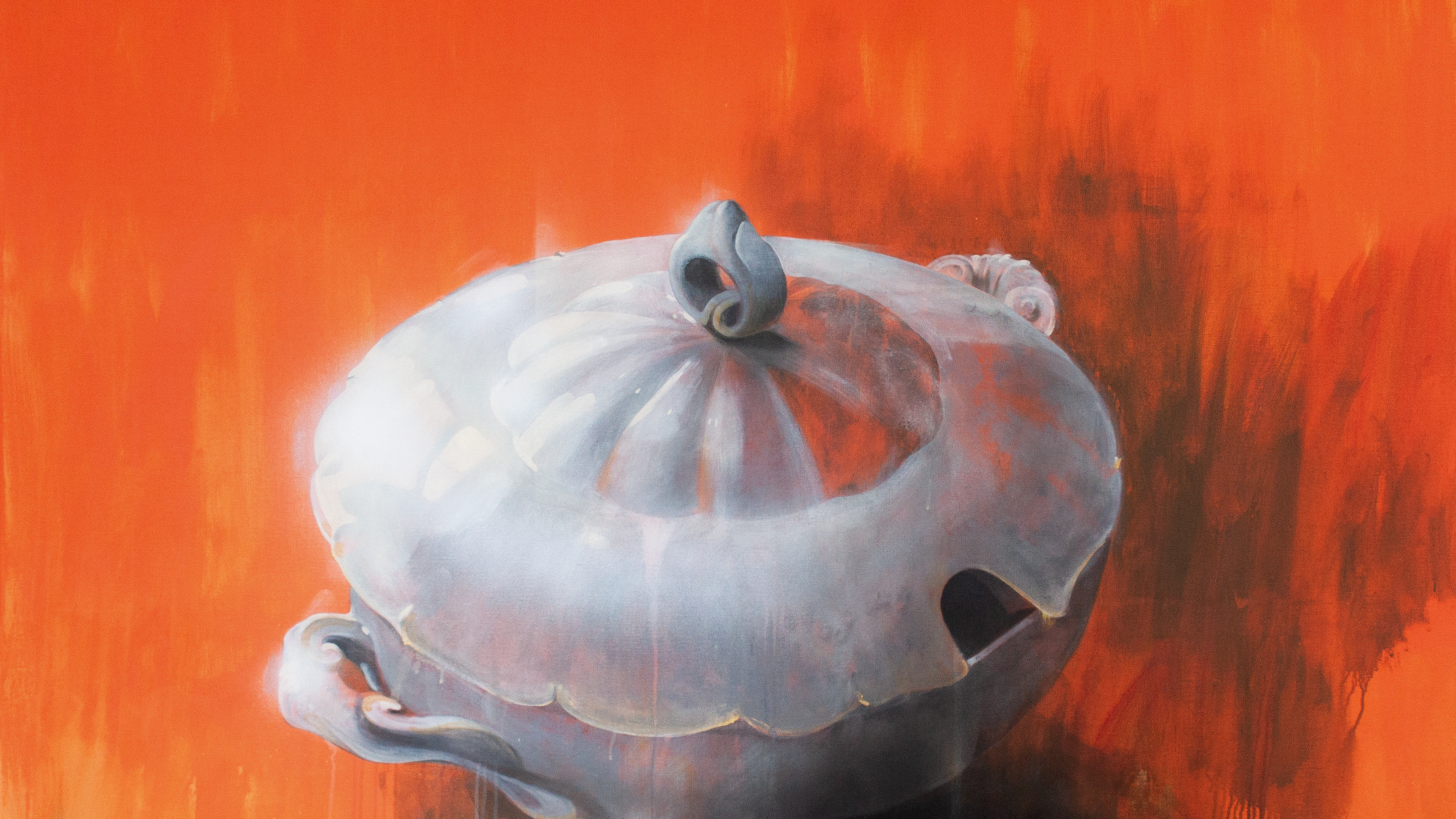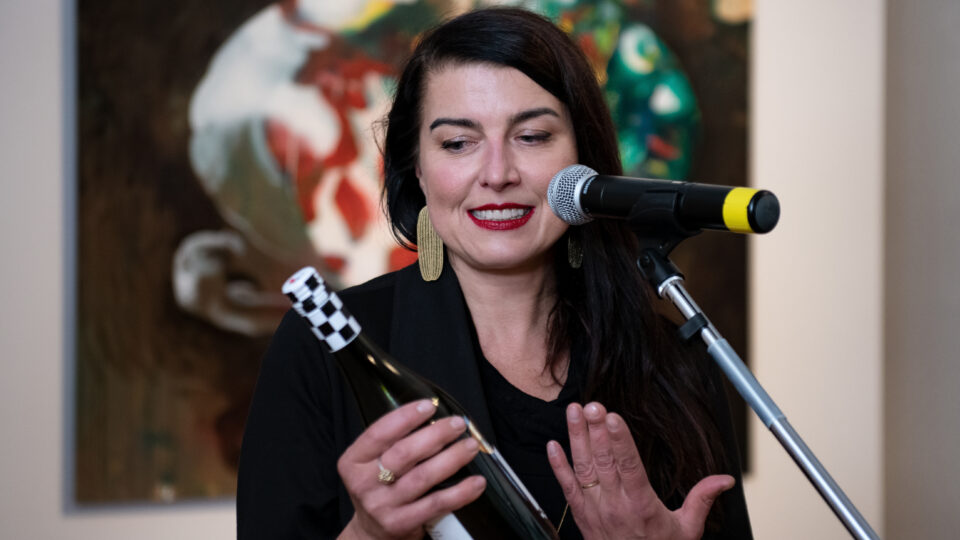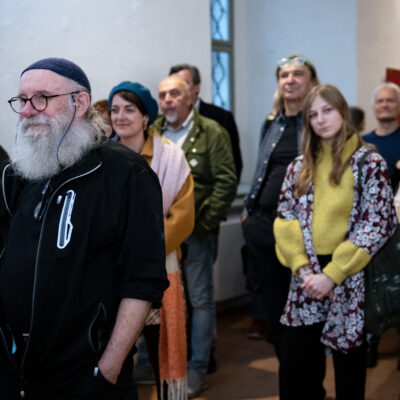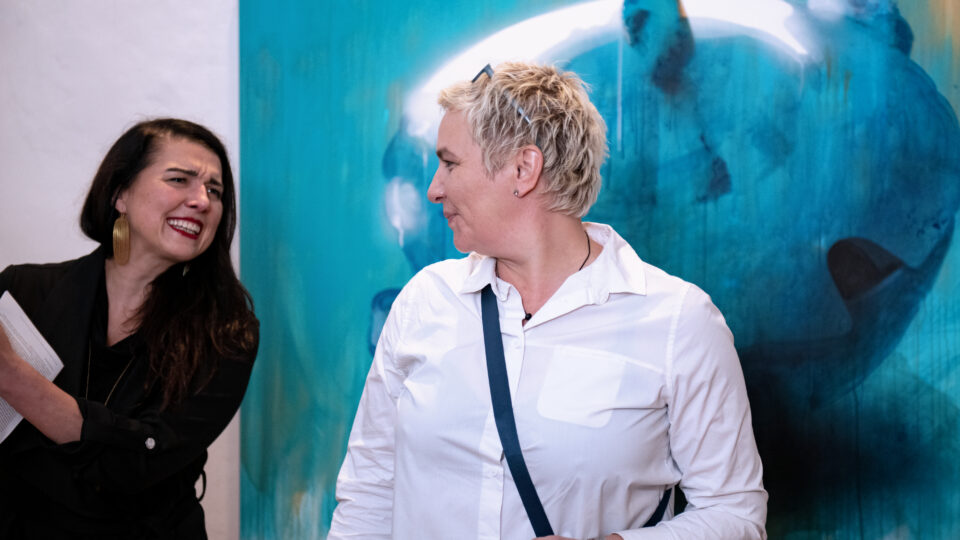Ordinary Things, which Libor Lípa (born 12 September 1963 in Valtice) surprisingly painted on large canvases in his changeable yet distinctive style, brings the intimate theme of the world of objects associated with human rituals, mutual bonds and contemplation to the gallery’s exhibition spaces at Café Fatal. This Moravian artist, whose range spans a wide scale of cultural activities, is primarily associated with the renowned Mikulov Art Symposium, which he co-founded and organised for a period of twenty-five years. This involvement almost eclipsed his own artistic activities, focused in particular on painting, printmaking and design. For some time, he was also active in a local band called ‘U nás se svítí’. Nevertheless, Lípa’s extensive international and domestic exhibition activities confirm his artistic qualities and personal growth – and his recent cycle of paintings of soup bowls is no exception. These paintings are accompanied by other images, all of which the artist has summarised with the title Ordinary Things.
In his work, Lípa tries to discover the inherent meaning or spiritual essence of the material world of objects. In his intimate cycle, he explores painting as a principle in and of itself. He realises that we look at reality through different eyes and reaches the conclusion that these different perspectives complicate human understanding and the ability to communicate with one another. For this reason, he asks us to turn to simple yet basic unifying building blocks of our shared inner integrity.
An important role in his paintings is played by light and colour. He himself describes his perception of light and the process of painting as follows: ‘There are different kinds of light, just as there are different ways of thinking. Inner, solar, artificial, cast, reflected, felt, lost, warm or cold, curved, coloured and white, sharp, soft, and so on. I have succeeded in painting a picture that is illuminated internally by sunlight and, as a whole, externally by artificial light.’
I have chosen this series of paintings for the exhibition at GASK precisely for its transparent clarity. Lípa dresses his porcelain objects in a number of different ways, in a variety of designs/decors inspired by Old World tradition, Moravian folk customs and Pop art. He combines seemingly incompatible elements to create a new kind of neo-Postmodern still life. His still lifes – not just soup bowls but also tea bags and floating ducks – transport or minds into a state (atmosphere) of rest, of being absorbed in personal meditation or sharing time in a close and private circle of friends and family. Behind the world of objects, we can sense personally felt situations and the profoundness of human solidarity. In Lípa’s colourful, colourist interpretation, ‘ordinary things’ take on the form of a kind of updated Magical Realism.
In collaboration with Karel Kerlický’s KANT Publishers, this year the artist published two extensive and comprehensive publications, LÍPA Evidence 1 and Evidence 2. These surveys of his career are available for sale at the GASK bookshop.
Veronika Marešová








